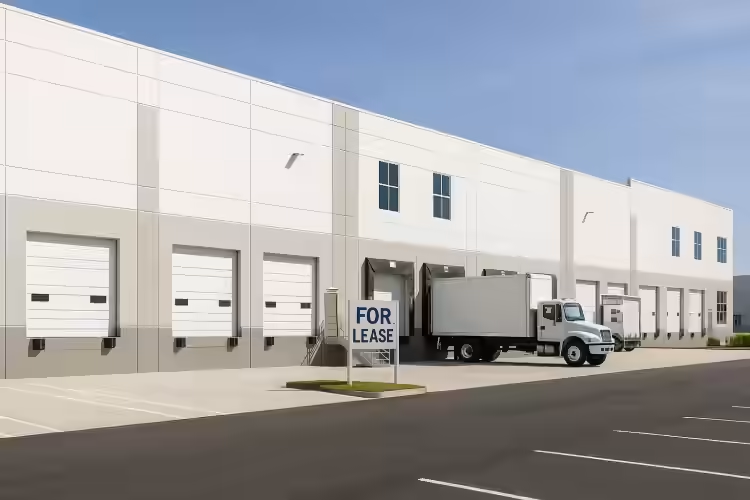Warehouse Leasing Checklist: What to Look For
So You're Leasing a Warehouse—Now What?
You’ve made the decision to lease a warehouse. Congrats. But here’s the kicker—choosing the wrong one could cost you thousands, maybe even millions, over time. And it’s not just about the rent. It’s the what you didn’t notice before signing that comes back to bite.
Whether you're expanding, relocating, or diving into logistics for the first time, there’s a checklist every smart operator should run through. You’d be surprised how many people miss the basics.
Location: The Real Dealbreaker
You know the saying—location, location, location. It’s cliché because it’s true.
Here’s what to consider:
- Proximity to major highways or interstates: Can your trucks get in and out without navigating a maze?
- Access to labor: In places like Louisville, Kentucky or Fresno, California, labor pool availability varies wildly between neighborhoods.
- Nearby competition or partners: Got suppliers or distributors close by? That’s a win. Got competitors stealing your drivers? Not so much.
Also, check out zoning regulations. You don’t want to lease a space and find out your type of use isn’t even allowed.
The Building Itself—Not Just Four Walls
Ceiling Height
Are you stacking pallets? Installing mezzanines? Then clear height matters—big time. A 24-ft clear height isn’t the same as 32-ft. That difference? It could double your storage capacity.
Floor Load Capacity
This one’s easy to overlook. You move in with heavy machinery or high-density racks, and the floor starts cracking like bad concrete art. Avoid that headache—ask for the floor load specs.
Dock Doors & Loading Areas
How many docks? Are they grade-level or truck-high? If you’re in e-commerce or distribution, this could make or break your operation. And don’t forget about drive-thru bays or ramps if you’re moving big stuff.
Column Spacing
Seems minor, right? But tight column spacing kills layout flexibility. Wide spacing = better racking, smoother traffic, fewer bottlenecks.
Infrastructure and Utilities
This is where things get real technical—fast. But you don’t need to be an engineer. Just ask the right questions:
- Power supply: Is there 3-phase power? Enough amps for your equipment?
- Lighting: LED vs. fluorescent makes a big difference—not just in brightness but in utility costs.
- Sprinkler systems: Is the building up to code? Especially important in states like California where fire codes can get strict.
- Connectivity: Can you get fiber internet? Shocking how many warehouses still can’t.
Need temperature control? Ask about HVAC capacity. Some buildings claim “climate controlled” but don’t actually hit the mark when it’s 95° in Phoenix, Arizona.
Lease Terms That’ll Make or Break You
Alright, let’s talk contracts. Here’s the stuff that’ll sneak up on you if you’re not careful:
- Triple Net (NNN) vs. Gross Leases: Know who’s responsible for taxes, insurance, and maintenance. Those costs add up.
- Annual rent escalations: 2–3% is normal, but we’ve seen 5% or more in hot markets like Nashville, Tennessee.
- Tenant Improvement (TI) Allowances: If you need to add offices or racking, negotiate TI credits up front.
- Exit clauses: What if your business outgrows the space in 18 months? Have an out—or a sublease clause.
Get your broker or real estate attorney to review everything. No shame in asking for help—this stuff’s complex.
Hidden Costs Nobody Talks About
You see a $7/sq ft deal in Charlotte, North Carolina and think, “Great price!” But then reality hits:
- CAM fees (Common Area Maintenance)
- Security systems
- Pest control
- Trash and recycling
All of these can add significant monthly overhead. So make sure you know the “all-in” cost—not just base rent.
Final Walkthrough: What to Double-Check
Before you sign anything, walk the space. And I mean really walk it.
Bring a tape measure. Count the docks. Test the water pressure. Turn on the lights. Walk the perimeter. You might discover a leaky roof, bad drainage, or evidence of pests. Or just poor maintenance overall.
And talk to the current or past tenants if you can. They’ll tell you stuff the landlord won’t.
Wrapping It Up: Make a Smart, Not Rushed Decision
Here’s the truth: warehouse leasing isn’t glamorous. But it’s foundational. Get it right, and your operations run smoother, faster, cheaper. Get it wrong, and you’ll be spending your mornings on the phone with the property manager—every. single. week.
So take the time. Use this checklist. Get advice. Negotiate hard. And think about not just today, but two years from now.
Because that lease you’re about to sign? It’s more than just a piece of paper. It’s the platform your business will either grow—or struggle—on.

